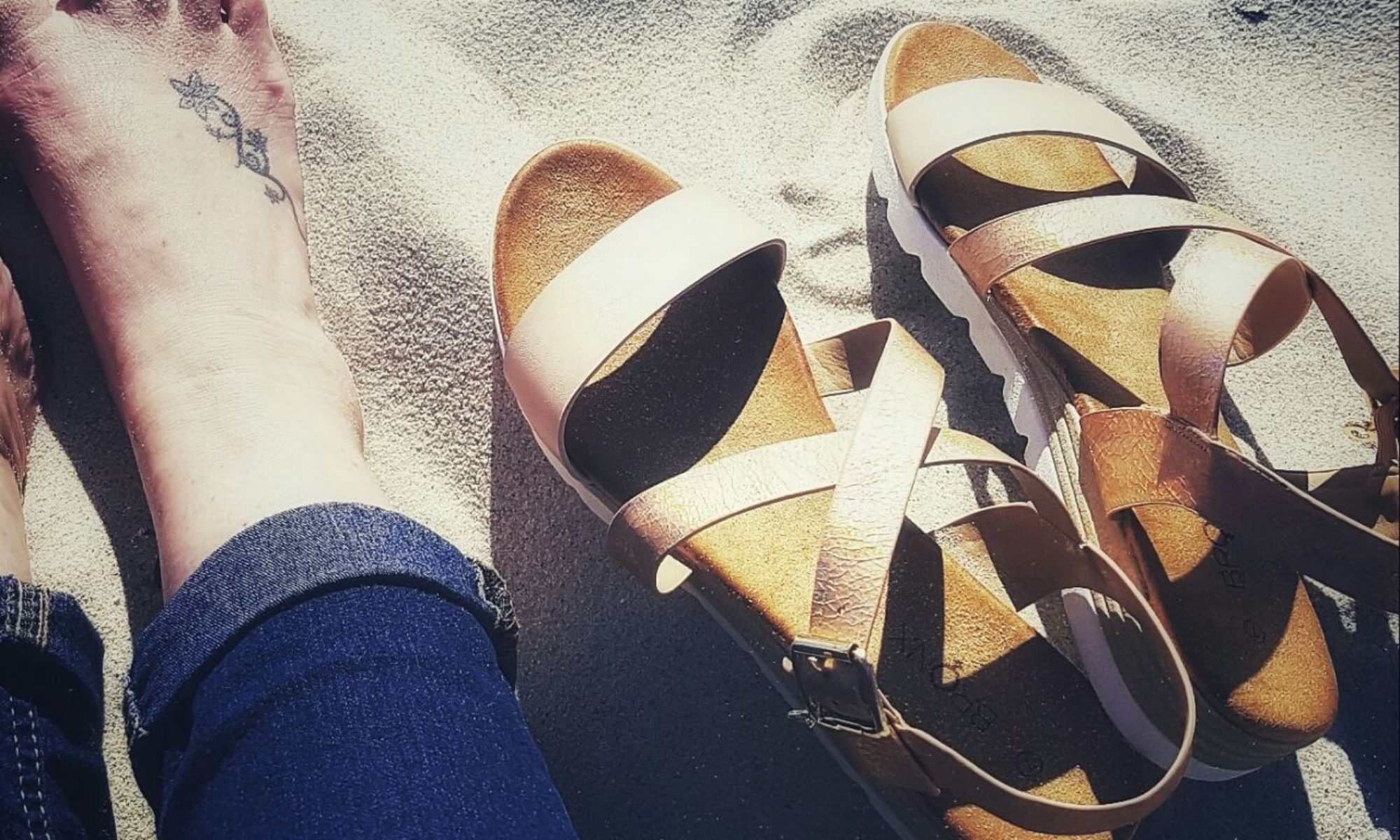How has everybody been? I haven’t been on this lil’ blog in months. Why? Well, there’s the global pandemic, Grade 4, and a hell of a lot of diagnoses including ASD, EDA, ADHD and PsA that have affected our family over the past couple of years. Today I want to share with you one of mine, namely PsA or Psoriatic Arthritis.
Psoriatic Arthritis Diagnoses
In 2019 I woke up one morning with a swollen knee. It was so weird as I’ve never had issues with my knees before. I iced it. It didn’t get better. I took pain meds. It didn’t get better. I rested. It didn’t get better. My knee just got bigger and bigger. To the point where people actually got a fright when they saw my enormous knee. Yes, it was that bad. And the pain was quite unbearable.
I went to my GP and he said that I must see a specialist. When I finally got an appointment with an Orthopaedic Surgeon, I was told that I need to have a procedure done under general anesthesia where they poke around with a camera to see what’s going on inside the knee (x-rays didn’t show anything). At that stage we thought it may be a meniscus disk (cartilage) tear. So they put me under and I was hoping for good news when I woke up. At least if it was a tear it could be fixed. Nope… the Doc said all was intact. All that he could see was a hell of a lot of fluid buildup. Next step… being tested for gout. Nope. Not that either. Then I was referred to a Rheumatologist. I didn’t even know what kind of specialist that was! So on to the next doctor a hobbled… still in a lot of pain.
My first consultation with my Rheumatologist (yes, I have my own now) was quite overwhelming as I didn’t really understand what this sweet lady was talking about most of the time. All I knew was that chances were that I had arthritis caused by an autoimmune disease. She stuck a huge needle in my knee and sucked out some of the fluid (gross, I know) and sent me for a long list of blood tests and x-rays. The x-rays showed that my bones looked perfectly fine and the blood tests showed high levels of inflammation. Not much else. Thing is, it can be pretty difficult to diagnose an autoimmune disease, especially if the diagnosis is mostly symptom based. The Doc said she thought that it may be Psoriatic Arthritis as it was not Rheumatoid Arthritis. She wasn’t convinced yet, but we had to start somewhere. I was put on immunosuppressants and cortisone. She also advised that I see a Dermatologist to see if I have Psoriasis. Thing is, I don’t. Not all people who have PsA have Psoriasis, but at least when Psoriasis is present, a diagnosis is simpler.
So how did the Doc get to my final diagnosis… a busted toenail! At my third appointment with her, I apologised for the state of my toenails (it was winter and I had no desire to paint them). I was quite embarrassed as my one big toenail looked terrible. I had an old belly dance injury and the nail never recovered after I stubbed it during a performance. I have to thank my big toe for my diagnosis… nail separation is one of the early signs of PsA. If only I knew. Ladies, leave your nails bare when you go to the doctor!
What is Psoriatic Arthritis?
Psoriatic arthritis is a form of arthritis that affects some people who have psoriasis — a disease that causes red patches of skin topped with silvery scales. Most people develop psoriasis years before being diagnosed with psoriatic arthritis. But for some, the joint problems begin before skin patches appear or at the same time.
Joint pain, stiffness and swelling are the main signs and symptoms of psoriatic arthritis. They can affect any part of the body, including your fingertips and spine, and can range from relatively mild to severe. In both psoriasis and psoriatic arthritis, disease flares can alternate with periods of remission.
There’s no cure for psoriatic arthritis. Treatment is aimed at controlling symptoms and preventing joint damage. Without treatment, psoriatic arthritis can be disabling. (Source: Mayo Clinic)
There is so much to say about PsA and I have read up on it for hours on end, but I won’t bore you with it all.
The past two years have been very difficult. I’ve been on immunosuppressants and cortisone for about 18 months. On average, I go for blood tests every 3 months to check on levels of inflammation and check if my liver is coping with all the meds. Luckily my liver is still fine. We are still trying to find the right combination of immunosuppressants and that has been worrysome. I’m praying that the new tablet will do the job as the final and next step to take, will be a ‘biologic’ and there is no way that we could afford that.
In my quest to calm this immune system of mine I’ve tried a few alternative meds/treatments. I take a handful of supplements every day. Omega’s and a high dose of Vit D is a must. In January I tried the Autoimmune Protocol diet. This way of eating involves cutting out all foods and additives that can cause inflammation. When I tell you it’s hectic, I really mean HECTIC. In short, you cut out gluten, legumes, nightshade vegetables, dairy, eggs, coffee, nuts and seeds, sugar, additives, processed foods… Basically you don’t ask ‘What can’t I eat?’, but rather ‘What can I eat?’!
Certain foods are believed to possibly increase the gut’s permeability, thereby increasing your likelihood of leaky gut.
The AIP diet focuses on eliminating these foods and replacing them with health-promoting, nutrient-dense foods that are thought to help heal the gut, and ultimately, reduce inflammation and symptoms of autoimmune diseases.
It also removes certain ingredients like gluten, which may cause abnormal immune responses in susceptible individuals.
While experts believe that a leaky gut may be a plausible explanation for the inflammation experienced by people with autoimmune disorders, they warn that the current research makes it impossible to confirm a cause-and-effect relationship between the two. (source: healthline.com)
You have to strictly follow the plan for 6 to 8 weeks and then slowly introduce foods that you have eliminated one by one to see what your trigger foods are. I followed the AIP diet for three months. My pain didn’t really go away, but I felt great. Clean eating really is a fantastic thing. I also lost 20 kgs in 3 months. That wasn’t my goal, but it was great. Until my hair started falling out because I lost too much weight too quickly. Because this diet takes a lot of planning and prep work, I wasn’t always prepared and because you can’t just grab something from the food cupboard when you’re hungry, I often went without food for way too long and went to bed hungry. I gave up and went back to my old ways of eating anything and everything in sight. Big fail. I want to start with the plan again, but this time I will be prepared.
I don’t have the guts (yet) to start again, so I decided to try a few things in the meantime. The first thing is a probiotic. I’ve used probiotics before, but I’ve never really experienced any real benefits. When I got the opportunity to try Elixirmune Gut Guard, I grabbed it with both arthritic hands after I read that it is highly effective in alleviating symptoms of autoimmune diseases. This potent probiotic actually has a long list of benefits and I’m excited to share my thoughts with you soon. I have also read (as I’ve mentioned, when you get diagnosed with an autoimmune disorder, you do a lot of reading!) that turmeric works wonders for inflammation. I have bags of organic turmeric in my cupboard, but I haven’t used it yet. I was gifted a voucher to do some shopping on Natural Options and I got myself Flora Force Turmerynne which contains turmeric, cayenne and black pepper and is said to aid in reducing inflammation. Fingers crossed! I also bought Flora Force BioFend which supports the immune system.
This post has taken me quite a while to write and as I proofed what I’ve written so far, I realised that I haven’t really shared that much of what I’ve physically experienced. Yes, I’ve told you about the swollen knee, the meds, the diet. But what I haven’t really shared, is the pain. The pain that never really goes away. Some days it’s a 2, some days it’s a 6. Some moments it’s a 8. Now it may not sound that bad when the pain level is at 2, but if you never seem to experience a 0, it can get to you. My knees are a lot better than they used to be, but I have other joints that hurt now. Not to the same degree, but they can get very stiff and swollen. I’ve burst into tears trying to wash windows; my body can’t. My hands have also become incredibly weak. I struggle with fine motor skills. I struggle to pick up small objects, I drop things and I find it difficult to open bottles and cans. I can feel my fingers starting to get very tired typing this post. And I’m probably going to feel it tonight. I also suffer from back pain, mood swings and I have trouble sleeping. Plus my eyesight is being affected. I’ve always had perfect vision, but now it seems that I need glasses. I will be going for an eye test soon. All of this is really hard. Physically and emotionally. The exhaustion has brought me to tears so many times. I feel old. Much older than I should.
There is still so much more to say, but I’ll leave you with this…
If you suffer with chronic pain, you are not alone. Living with pain is very hard. Others won’t always understand that your pain is constant. The exhaustion is constant. The worry is constant. Just because your condition or illness isn’t always visible, doesn’t mean it’s not there. Take care of yourself. See a doctor when you suspect something is wrong. And if that doctor doesn’t get to the root of the problem, find another doctor. And then another. Autoimmune diseases can be very hard to diagnose. Make them listen.
And take care of yourself.
xoxo
Disclaimers: Free stock image found on www.goodhousekeeping.com. The links in this post are affiliate links.


